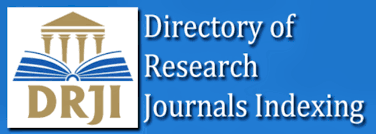Assessment of road traffic accidents trauma using computed tomography scan in King Khalid Hospital, Najran province, KSA
DOI:
https://doi.org/10.30574/gscarr.2021.6.1.0008Keywords:
Computed Tomography, Road Traffic Accident, Trauma, spine, HeadAbstract
Road accidents have been considered to be one of the primary causes of mortality and lifelong disability in the early decades of life in different countries, and road traffic injuries (RTI) have been identified as the ninth most common cause of disability adjusted life years (DALYs) lost for all age and gender categories. Multi-Detector Computerized Tomography( MDCT) scanners are widely used because they rapidly produce high-resolution scans of large areas, offering short examination times for multiple body regions under emergency conditions. A retrospective descriptive quantitative hospital based study conducted in 2522 patients their ages ranged (1-80) , aimed to assess RTA trauma in Saudi Population in Najran province (KSA) in King Khalid Hospital, using CT scan . Statistical analysis of the data was performed using the Microsoft Excel. The study found that there were 2295 males (91%) 227 females (9%), were effected by RTA , age group (21-30 years) which signified 1011(40.1%.), were frequently affected, spine and head were more affected and reported (980) (38.9%) , (692) (27.4%) respectively .The conclusion of the study achieved that CT imaging plays a major role in diagnostic workflow in the evaluation of patients with trauma those usually have simultaneous injuries to several anatomic regions or organs, it can decrease the serious time and increase survival.
Metrics
References
KIM, Karl, et al. Analyzing the relationship between crash types and injuries in motor vehicle collisions in Hawaii. Transportation Research Record, 1994, 1467: 9.
Meena RK, Singh AM, Singh CA, Chishti S, Kumar AG, Langshong R. Pattern of fractures and dislocations in a tertiary hospital in North-East India. Internet Journal of Epidemiology. 2013; 11.
World Health Organization. Global Health Observatory (GHO) data. World Health Statistics. Geneva (CH): World Health Organization. 2010.
Peden M, Scurfield R, Sleet D, Mohan, Hyder AA, Jarawan A, editors. World Report on Traffic Injury Prevention. Geneva (CH): World Health Organization. 2004.
World Health Organization. The Injury Chart book: A graphical overview of the global burden of injuries. Geneva (CH): World Health Organization. 2002.
The Cooperation Council for the Arab States of the Gulf (GCC). Statistics Department. 2012.
World Health Organization. Global Status Report on Road Safety Geneva (CH): World Health Organization. 2013.
Al Turki YA. How can Saudi Arabia use the Decade of Action for Road Safety to catalyse road traffic injury prevention policy and interventions? Int J Inj Contr Saf Promot. 2014; 21(4): 397-402.
World Health Organization. Global Status Report on Road Safety. Geneva (CH): World Health Organization. 2009.
Jean-Michel Yeguiayan, Anabelle , Marc Freysz , et al. Impact of whole-body computed tomography on mortality and surgical management of severe blunt trauma, Critical Care. 2012; 16: 101
Hilbert P, zurNieden K, Hofmann GO, Hoeller I, Koch R, et al. New aspects in the emergency room management of critically injured patients: a multi-slice CT-oriented care algorithm. Injury. 2007; 38: 552-558.
Philipp MO1, Kubin K, Hörmann M, Metz VM Radiological emergency room management with emphasis on multidetector-row CT. Eur J Radiol. 2003; 48: 2-4.
Leidner B, Beckman MO. Standardized whole-body computed tomography as a screening tool in blunt multitrauma patients. Emergency Radiology. 2001; 8: 20-8.
Saltzherr TP, Goslings JC. Effect on survival of whole-body CT during trauma resuscitation. Lancet. 2009; 374: 198-199.
Jiang L, Ma Y, Jiang S, Ye L, Zheng Z, Xu Y, Zhang M. Comparison of whole-body computed tomography vs selective radiological imaging on outcomes in major trauma patients: a meta-analysis. Scand J Trauma Resusc Emerg Med. 2014; 22: 54.
Al Orf, Ali, et al. "Patterns of injury detected by pan-computed tomography after road traffic accidents: retrospective review from a trauma center in Saudi Arabia." Annals of Saudi medicine. 2018; 38(4): 245-250.
Barrimah I, Midhet F, Sharaf F. Epidemiology of road traffic injuries in qassim region, saudi arabia: consistency of police and health data. Int J Health Sci (Qassim). 2012; 6(1): 31-41.
Akanji, O. A., et al. "Computerized tomography scan and head injury: the experience in a tertiary hospitl in nigeria. A cross sectional study.academic jornal vol 1/6 .2015; 1-15.
Downloads
Published
How to Cite
Issue
Section
License
Copyright (c) 2021 A Fathelrahman Samia, J Al Haydar Maryam, A Alabbad Fatimah, M Alhajri Bayan, A Alshhri Zahraa, Alqahtani A, M Alwated Rawan

This work is licensed under a Creative Commons Attribution-NonCommercial-ShareAlike 4.0 International License.












